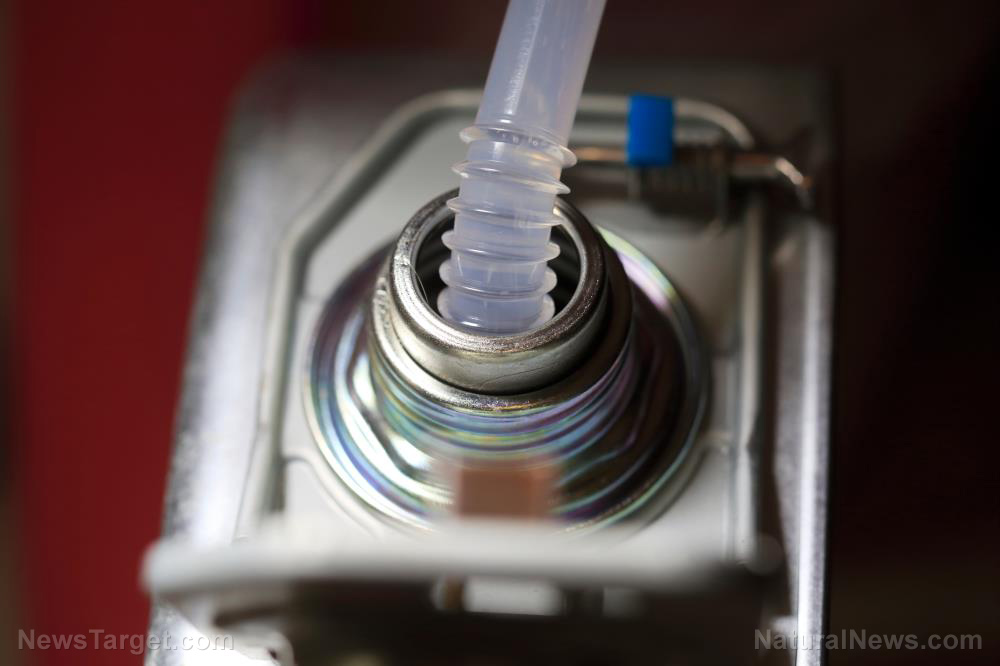How to build a mobile fuel storage system when SHTF
08/15/2018 / By Russel Davis

Whether you are planning for unwanted emergencies or simply prepping to bugout for a day or two, having an efficient fuel source give you the upper hand in any situation. Sure, standard wood stove and gasoline-based fuels are non-negotiable staples, but creating a readily-available fuel system may always come in handy. An article in the survivalist website SurvivalBlog.com listed a few tips on creating your very own mobile fuel storage system.
Building your mobile fuel storage system
According to the article, customizing an old car model into an ideal bugout vehicle proved beneficial in creating a mobile fuel storage system. In the article, the author modified a 4×4 pick up truck’s fuel system into a dual-fuel type that runs on propane and gasoline, making it an ideal bugout vehicle. The modified pick up featured a 230-liter propane tank in front of the trunk bed. The propane tank, which was hidden below the truck box, was mounted to custom-made roll bars. By pulling a manual cable connected to the dual-fuel system, the author reported being able to switch between gasoline and propane. The truck’s dual-fuel modification enabled it to start and run faster on proprane than on gasoline, especially during the cooler season.
The article also stressed the importance of owning portable propane heaters. According to the article, infrared radiant propane heaters were ideal for both home and outdoor use. These heaters could run using one-lb propane camping bottles or a 20-lbs barbecue tank. A propane heater unit with up to 18,000 BTU per hour could easily heat up an office in less than an hour. On the other hand, a propane heater unit with up to 30,000 BTU could easily heat up a big home. Using a 20-lbs barbecue tank as a fuel source would prove efficient as it lasted longer, requiring tank refill every 48 hours.
These mobile fuel storage systems could easily be mounted on walls and taken out. Both propane heater systems were also deemed safe by the Canadian government and some U.S. safety organizations. Both units also used a catalytic conversion process that vaporized or burned toxic carbon monoxide in the burning process. Another advantage of owning these mobile fuel systems was that they did not require an exterior vent. These systems produced clean, moist hot air into target areas, and showed higher output rating compared with furnace or wood stove.
The article also suggested using generators as mobile fuel storage system. A generator is easy to start, operate, and move around in the event of a power outage. In order to do this, the author installed a generator backup electrical panel adjacent to and in combination with a grid power panel. At the event of an outage, users can simply switch on the power panel that readily disconnects from the utility power. According to the article, this type of panel is a safer model as it takes out the risk of back feed.
The author chose two types of generator: a dual fuel 5,000-watt unit and a 2,000-watt inverted super quiet model. The dual fuel model came with standard wheels and handles, making it mobile. The dual fuel model was also equipped with an electric start battery system, a backup pull cord system, and all the propane lines needed to hook the generator into a standard 20-lb barbecue tank. This model was tested in 100-lb propane bottles and 20-lb tanks, all of which turned out well, the article said.
Learn more about bugout essentials at Offgrid.news.
Sources include:
Tagged Under: bugout, emergency preparedness, fuels, mobile fuels, prepping, survival



















